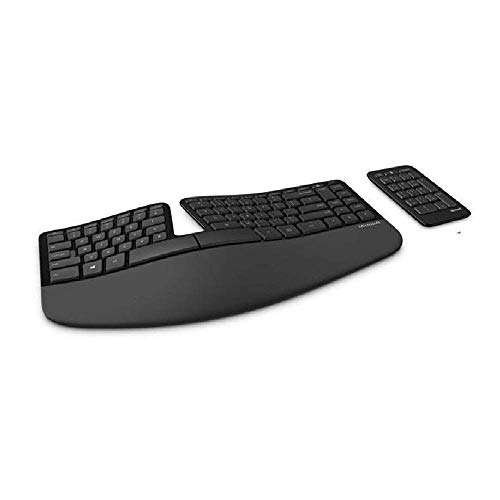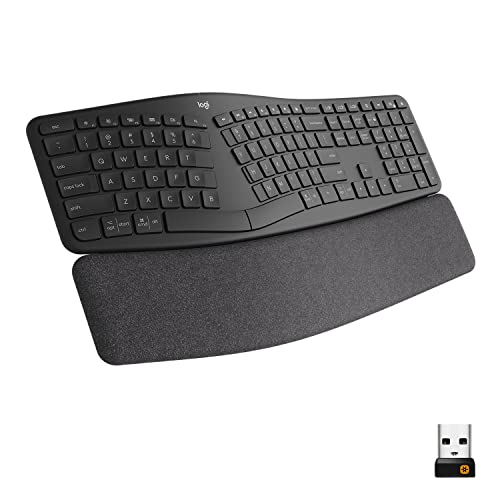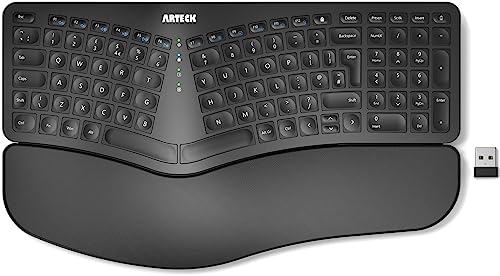When it comes to typing, comfort matters. Ergonomic keyboards are designed to provide a more natural hand, wrist, and forearm position. This promotes better posture and reduces strain during long typing sessions. If you find yourself typing for hours on end, investing in an ergonomic keyboard can be a game-changer for your overall comfort and productivity.
One of the key benefits of ergonomic keyboards is their ability to reduce the risk of repetitive strain injuries (RSIs). Standard keyboards often force your wrists into awkward positions, which can lead to discomfort or even long-term injury. In contrast, ergonomic designs encourage a more relaxed and neutral wrist position, significantly lowering your chances of developing conditions like carpal tunnel syndrome.
Additionally, many ergonomic keyboards come with features that enhance usability. Split designs allow for a more natural hand placement, while cushioned palm rests provide added support. Some models even include adjustable features, enabling users to customize their experience based on personal preferences. With these thoughtful designs, typing can feel more natural and less taxing on your body.
Switching to an ergonomic keyboard can also lead to increased efficiency while typing. With a comfortable setup, users often find they can type for longer periods without fatigue, leading to improved focus and productivity. The benefits of these keyboards extend beyond mere comfort; they can positively impact your entire work routine, making tasks feel less daunting and more enjoyable.
How to Choose the Right Ergonomic Model
When it comes to choosing the right ergonomic keyboard, the options can feel overwhelming. However, focusing on a few key factors can help you make an informed decision. First, consider the keyboard layout. Ergonomic models often feature a split design that allows your hands to rest in a more natural position. This layout can reduce strain on your wrists and forearms, making typing a much more comfortable experience.
Next, pay attention to the keyboard's key design and feedback. Some keyboards have soft-touch keys that require less force to press, while others may have a tactile response that provides feedback on each keystroke. Think about what feel is most comfortable for you. Additionally, check if the keyboard has adjustable height settings. Being able to customize the angle of your keyboard can help you find the perfect position for your wrists and fingers.
Another important factor to consider is connectivity. Ergonomic keyboards come in both wired and wireless options. If you prefer a cleaner workspace without cords but are concerned about battery life, look for models that have long-lasting rechargeable batteries. Furthermore, ensure the keyboard is compatible with your existing devices, whether you’re using it with a desktop, laptop, or tablet.
Finally, don't forget about the extra features that may enhance your typing experience. Some ergonomic keyboards come with integrated palm rests which provide additional support, while others might have customizable shortcut keys to help you work more efficiently. Think about what features are most important to you and your work style to ensure you pick a model that meets your specific needs.
Tips for Adjusting Your Keyboard Setup
Adjusting your keyboard setup can make a world of difference in your comfort and productivity. Here are some simple tips to help you find the perfect arrangement for your ergonomic keyboard.
First, consider the height of your keyboard. Ideally, your keyboard should be positioned so that your elbows are bent at a 90-degree angle or slightly obtuse. This means that the keyboard should be on a surface that allows your wrists to remain flat and your hands to hover comfortably above the keys. A keyboard tray or an adjustable desk can be a great investment if your desk height doesn’t allow for the right positioning.
Next, pay attention to your wrist position while typing. It's important to keep your wrists in a neutral position, which means they shouldn't be bent up or down. If your keyboard has a built-in wrist rest or you choose to add one, make sure it provides support without causing your wrists to angle upwards. This can significantly reduce strain during long typing sessions.
Don’t forget about your screen position either! Your monitor should be at eye level, so you won’t have to crane your neck down or strain your eyes. A good rule of thumb is to position the top of the screen at or slightly below your eye level and about an arm's length away. This will help reduce neck and eye strain as you type away.
Lastly, take regular breaks to stretch and reset your posture. No matter how perfect your setup is, sitting in one position for too long can lead to discomfort. Stand up, stretch your arms and wrists, and give your eyes a break from the screen every 30 minutes or so. This habit not only improves comfort but also enhances your focus and productivity.
Maintaining Good Posture While Typing
Your keyboard should be positioned at a height that allows your elbows to stay close to your body, forming an angle of about 90 degrees. This prevents excessive reaching and prevents unnecessary tension in your neck and shoulders. If your keyboard is too high, consider using a keyboard tray or adjusting your chair height to achieve the ideal position.
Keep your wrists in a neutral position while typing. Avoid bending them upwards or downwards, as this can lead to discomfort over time. Using an ergonomic keyboard can help by providing a more natural hand position. Additionally, use wrist supports if necessary, but ensure that they don’t limit your movement or create pressure points.
Finally, remember to take regular breaks. Stretch your fingers, rotate your wrists, and change your position every hour or so. These small habits can make a significant difference in your overall comfort and help you maintain good posture while typing. By prioritizing your posture, you enhance your typing experience and support your long-term health.






